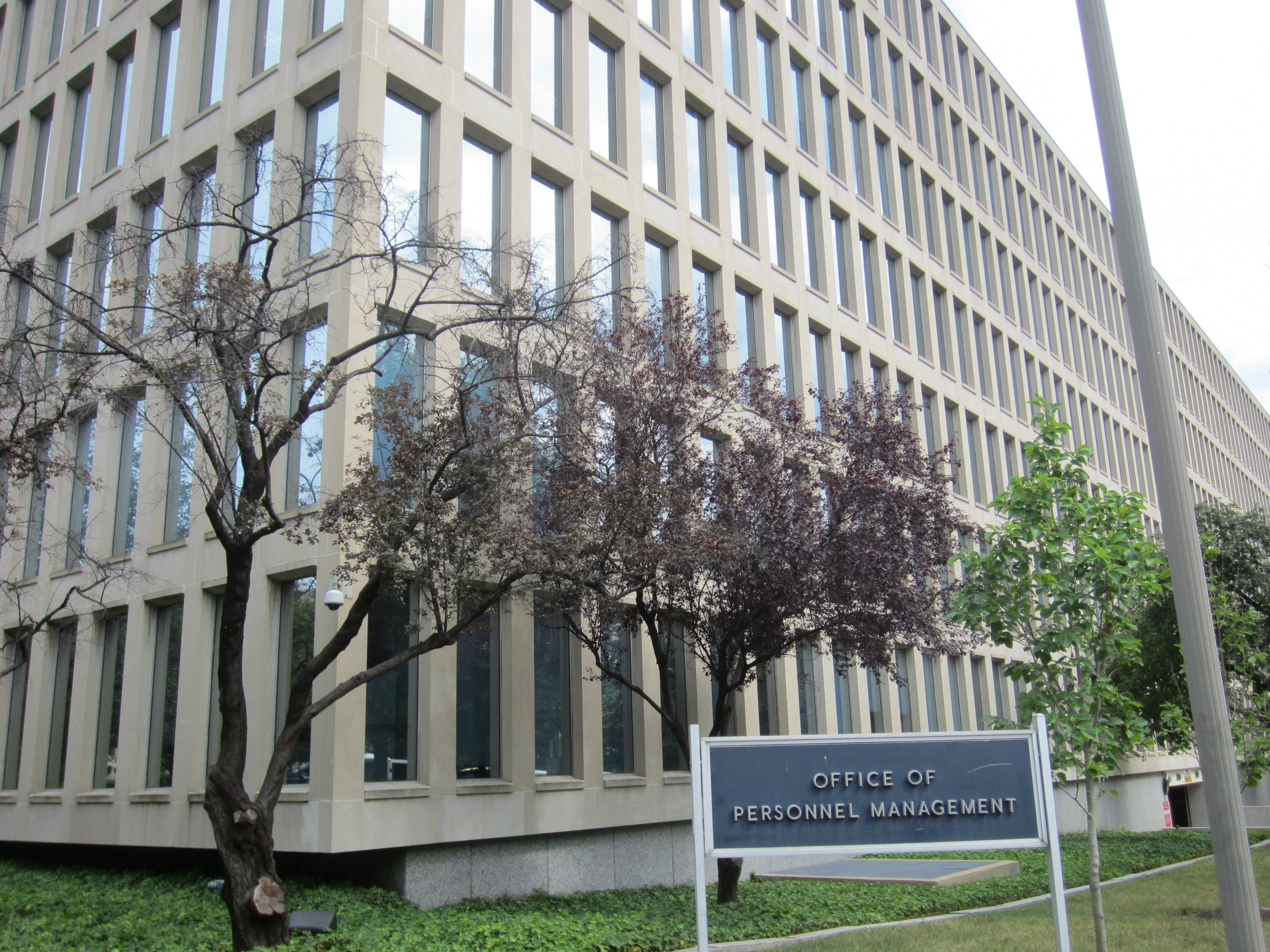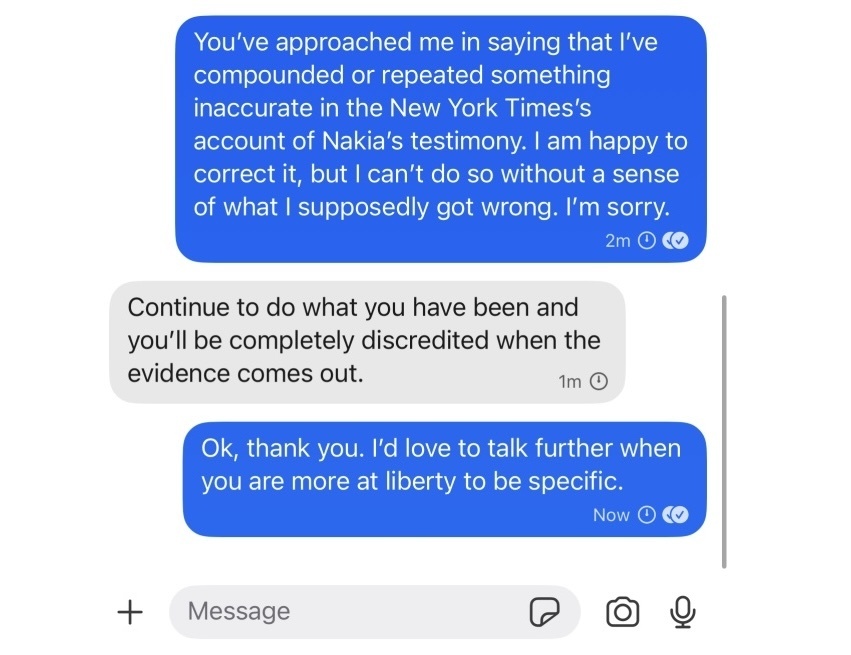The End Game for Schedule G
Schedule G reflects a broader trend of moving the civil service back toward a patronage system, favoring loyalty over expertise.

Published by The Lawfare Institute
in Cooperation With

In the latest change to personnel policy under the Trump administration, on July 17 President Trump issued an executive order establishing Schedule G within the excepted service. Schedule G exempts noncareer, political positions of a “policy-making or policy-advocating” character from the competitive service, allowing these positions to be hired without competitive examination.
It is unclear, however, why agencies need Schedule G. Indeed, Schedule G appears redundant to Schedule C—a separate schedule within the excepted service that covers noncareer, political positions of a “confidential or policy-determining” character. Both Schedule C and Schedule G resemble Schedule Policy/Career—an effort to make career employees in policy-influencing positions removable at will. Why has the Trump administration invested so much time and energy into creating a complex web of employee categories?
The key is the administration’s broader efforts to prioritize loyalty over merit and expertise. While much of the attention has been focused on personnel policy in the courts, the most meaningful changes have occurred within obscure executive orders and Office of Personnel Management (OPM) memos. Stitching together Schedule G with several other recent actions reveals a plan to render much of the federal workforce exempt from prohibitions on political hiring and removable at will. Reviving a 19th-century patronage model, the Trump administration seeks to replace the civil service’s merit-based system with one that rewards loyalty. This patronage system threatens to erode the expertise on which state capacity depends.
The Redundancy of Schedule G
The civil service comprises three main components: the competitive service, the excepted service, and the Senior Executive Service (SES). Most career employees are classified as part of the competitive service, which requires a merit-based evaluation of each job candidate prior to hiring. The president, however, has the statutory authority to exempt positions from the competitive service as “conditions of good administration warrant.” These positions appear in the excepted service and are listed in a series of “schedules.” For example, Schedule A covers positions “for which it is not practicable to examine,” such as chaplains, attorneys, and individuals with disabilities. Although positions in the excepted service are exempt from competitive examination, employees in these positions generally enjoy the same tenure protections as individuals in the competitive service.
The president’s authority to exempt positions from the competitive service is broad. In 1953, President Eisenhower used this authority to move positions of a “confidential or policy-determining character” into Schedule C. Schedule C created a class of low-rank political appointees within the civil service. Exempting these positions from competitive examination made it easier for presidents to fill these positions with political loyalists. Employees in Schedule C positions do not enjoy tenure protections, meaning presidents can also remove these employees at will following a change in the White House. Today, approximately 1,550 employees work in Schedule C positions.
Schedule C is a creature of executive order and OPM regulations. Congress, however, has enacted provisions within the civil service laws to effectively preserve Schedule C. For example, 5 U.S.C. § 2302 exempts positions of a “confidential, policy-determining, policy-making, or policy-advocating character” from the prohibition on appointing or removing employees based on political affiliation. Likewise, 5 U.S.C. § 7511 prevents individuals in policy-influencing positions from receiving tenure protections. Astute readers will recognize the phrase “confidential, policy-determining, policy-making, or policy-advocating” as the same one that OPM relied on in creating Schedule Policy/Career (discussed below).
Schedule G appears largely redundant with Schedule C. Compare the language of these two schedules. The civil service rules define Schedule C as “[p]ositions of a confidential or policy-determining character normally subject to change as a result of a Presidential transition.” President Trump’s executive order defines Schedule G as “[p]ositions of a policy-making or policy-advocating character normally subject to change as a result of a Presidential transition.” As a practical matter, determining which positions should properly be described as “policy-making” rather than “policy-determining” (and vice versa) is a rather vexing task. Indeed, Congress itself seems to use “policy-determining” and “policy-making” interchangeably, referring to “confidential or policy-determining” positions in some places and “confidential or policy-making positions” in others. As a matter of statutory law, the origin of Schedule G is rather obvious. Congress exempted positions of a “confidential, policy-determining, policy-making, or policy-advocating” from the civil service’s tenure protections. Schedule C covers “confidential” and “policy-determining” positions. Schedule G now covers “policy-making” and “policy-advocating” positions.
Nothing prevented President Trump from using Schedule C in the manner that he intends to use Schedule G. In short, the phrase “confidential, policy-determining, policy-making, or policy-advocating” is a term of art that Congress intended to apply to political appointees broadly. (For a more thorough treatment, read my earlier articles on Schedule Policy/Career.) Congress did not intend for “policy-determining,” “policy-making,” or “policy-advocating” to describe distinct roles within the federal workforce. Instead, the entire phrase embodies the sort of redundant iterations to which, in the words of Justice Antonin Scalia, “lawyers, alas, are particularly addicted—such as ‘give, grant, bargain, sell, and convey,’ ‘aver and affirm,’ ‘rest, residue, and remainder,’ or ‘right, title, and interest.” The phrase has meaning as a whole rather than in its constituent parts. Consequently, any positions that fall within Schedule G could also fall within Schedule C.
Even if President Trump believed that certain “policy-making” or “policy-advocating” positions did not fall within the current definition of Schedule C, he could have amended Schedule C’s definition by executive order to cover all positions of a “confidential, policy-determining, policy-making, or policy-advocating” character. Two reasons, however, plausibly explain why President Trump thought it necessary to establish Schedule G rather than amend Schedule C.
First, the creation of Schedule G may offer a procedural advantage. While President Trump could amend the definition of Schedule C, he could not amend Schedule C’s implementing regulations without notice-and-comment rulemaking. That said, the regulations themselves are rather short (that is, only two provisions). Those regulations require OPM to approve all new Schedule C positions and place a limit on the number of temporary Schedule C positions. (Importantly, there is no statutory limit on the number of Schedule C positions.) Schedule G operates free from those constraints. Nevertheless, OPM could have removed those restrictions through rulemaking.
The creation of Schedule G also allows the administration to evade some statutory constraints that Congress has placed on Schedule C since its creation. For example, 5 U.S.C. § 4508 prohibits presidents from giving cash awards to SES positions and Schedule C positions during presidential election periods. Removing these statutory restrictions would require an act of Congress. That said, few other statutory provisions actually reference Schedule C or use the operative language of “confidential or policy-determining” positions. When Congress has sought to restrict or exempt policy-influencing positions, it has typically used the entire phrase “confidential, policy-determining, policy-making, or policy-advocating.” Accordingly, the separation of Schedule C from Schedule G does not appear to buy the administration as much statutory flexibility as one may expect.
Second, the Trump administration may want Schedule C and Schedule G to operate differently from one another. The executive order makes specific mention of “improving the operations of the Department of Veterans Affairs,” but nothing limits Schedule G’s application to the Department of Veterans Affairs. Indeed, the press release acknowledges that Schedule G will “streamlin[e] appointments” in agencies “like the Department of Veterans Affairs” (emphasis added). It appears other agencies will also have Schedule G appointees.
More likely, I suspect the administration hopes to preserve its argument that “confidential, policy-determining, policy-making, or policy-advocating” is not a term of art. Although I disagree, I am sympathetic to the textualist argument that statutes should be interpreted in a way that gives meaning to every word and phrase. The Trump administration adopted a hyper-textualist interpretation of this phrase in the creation of Schedule Policy/Career, and the decision to separate Schedule C and Schedule G lends further credence to its argument that each component of the phrase—“confidential,” “policy-determining,” “policy-making,” and “policy-advocating”—captures different tasks performed by federal employees.
That said, I cannot predict precisely how the Trump administration intends for Schedule C and Schedule G to differ. The devil is in the details of implementation. The Trump administration has refused to define the phrase “confidential, policy-determining, policy-making, or policy-advocating” in its proposed rules, allowing it the flexibility to use the phrase as it sees fit. The lack of a definition makes it difficult to ascertain how words like “policy-determining” and “policy-making” differ in the mind of the administration.
Perhaps the Trump administration will use Schedule G in a rather narrow way, filling it with a thousand or so positions that it believes are otherwise excluded by the definition of Schedule C. (That would be a remarkable exercise of restraint by an administration that has signaled a desire to deeply politicize the federal workforce.) Alternatively, the Trump administration may adopt an expansive view of Schedule G, seeking to redefine thousands of career positions as political positions. The administration’s other policies give reason to believe that the expansive approach is more likely than the restrained approach.
Three Other Developments
Before explaining how I think Schedule G fits into the broader scheme of the Trump administration’s changes to personnel policy, I must address three other recent developments in personnel policy.
First, OPM published a “Merit Hiring Plan” in May that seeks to reform the hiring process. Some of these changes would improve the functioning of the federal workforce, such as efforts to decrease hiring times and to improve communication with applicants for employment.
One change, however, is likely unlawful and certainly contrary to the spirit of the civil service laws. The plan requires agencies to ask applicants to identify “one or two relevant Executive Orders or policy initiatives that are significant to you, and explain how you would help implement them if hired” (emphasis added). Most positions play no role in the implementation of executive orders and, therefore, the question is not sufficiently tailored to determine whether the applicant is equipped to perform the role of the position. Asking applicants to identify personally significant policy initiatives amounts to a loyalty test designed to discern political beliefs. As the Supreme Court has explained, the First Amendment prohibits public employers from basing hiring decisions on an applicant’s political beliefs. Indeed, the Department of Justice Office of the Inspector General concluded that similar questions violated the civil service laws during an investigation of hiring practices in the George W. Bush administration. The Merit Hiring Plan reflects a desire to increase the role that partisan loyalty plays in hiring.
Second, the administration has removed career employees it perceives as critical of its policies or who affiliate with individuals critical of its policies. Michael Feinberg recently recounted his experience at the Federal Bureau of Investigation. Maurene Comey—a high-profile career prosecutor involved in the Epstein trial and daughter of James Comey—was removed from her position on July 16. In many instances, the Trump administration has refused to explain its decision to remove these career employees, citing “Article II” as the sole cause. These removals lay the groundwork for litigation in which the Trump administration will argue that Article II prevents Congress from insulating federal employees from presidential removal.
Third, the administration is now arguing that tenure protections for SES positions violate Article II of the Constitution. SES positions are executive positions that work just below top presidential appointees and form a layer of upper management within the federal workforce. The SES is divided into career and political positions, and the career employees enjoy tenure protections. The Trump administration argues that SES positions are inferior officers that are removable at will because they exercise significant authority. While the Supreme Court has continued to expand the president’s power to remove principal officers, it has maintained that Congress may protect inferior officers from removal by the president. Whether careerists in the SES are inferior officers or mere employees remains a separate question that a court would need to address. Expanding the removal power to inferior officers could result in a significant collapse of tenure protections for many career employees.
The End Game
How does all of this fit together? What I describe below is, admittedly, the scenario that would result in the greatest transformation of the civil service. The actual results could be milder, but this description helps to fit all the moving parts together.
Start from the top of the workforce. The Supreme Court has more or less greenlit the Trump administration’s expansion of the removal power with respect to principal officers. Its order permitting the removal of members of the National Labor Relations Board and the Merit Systems Protection Board illustrates a desire by a majority of the Court to overturn long-standing precedent that has allowed Congress to protect members of multimember commissions from removal. The Supreme Court will likely expand the removal power to encompass almost any principal officer within the executive branch.
Further expansion of the removal power to inferior officers and SES employees would grant the president even more control over the upper echelons of the federal workforce. Indeed, some scholars have argued that thousands of federal employees actually qualify as inferior officers. Expanding removal protections to inferior officers could result in a significant collapse of tenure protections for many career employees.
Even if the Supreme Court does not expand the removal power, changes to the civil service rules have already increased the president’s authority to remove career employees. The transformation for rank-and-file employees began with Schedule Policy/Career. Schedule Policy/Career excepts career employees in policy-influencing positions from the competitive service and makes these employees removable at will. Yet it still requires these employees to be hired using the same sort of merit-based procedures that govern the competitive service. So, while Schedule Policy/Career makes it easier to remove employees in policy-influencing positions, it does not make it easier to hire employees in policy-influencing positions. Nevertheless, the Merit Hiring Plan seeks to ensure that all new employee hires share the policy preferences of the current president.
Schedule C and Schedule G, however, provide much greater flexibility and control. Unlike positions in Schedule Policy/Career, positions in Schedule C and Schedule G are both easier to hire and remove. Nothing prohibits the president or agency from discriminating against Schedule C and Schedule G employees based on their political affiliation. Consequently, the president would be better served by placing policy-influencing positions in Schedule C and Schedule G because it gives him greater control over who occupies these positions relative to Schedule Policy/Career.
The most drastic action the administration could take is the following: Agencies and OPM could move an estimated 50,000 (if not more) policy-influencing employees to Schedule Policy/Career. They could then remove those employees from their positions. Then, the agencies and OPM could reconstitute these positions in Schedule C and Schedule G. Such a move would effectively ensure that every policy-influencing position is a noncareer, political position that can be hired and removed based on political loyalty. This change could reach deep into the federal workforce, affecting information technology specialists, scientists, economists, Freedom of Information Act officers, and other individuals whose jobs have a questionable connection to policymaking.
What’s left of the tenured civil service in this world? Absent a Supreme Court decision striking down all tenure protections as unconstitutional, some vestige of the competitive service would remain. The positions remaining in the competitive service would likely be those that the president has little interest in controlling. Frankly, the president probably does not care to determine who serves as a groundskeeper at Yosemite National Park or an orderly in a hospital run by the Department of Veterans Affairs. Vast swaths of the federal workforce, however, would be selected and removed based on partisan loyalty rather than merit and expertise.
Americans can debate whether the patronage system is desirable as a normative matter. Proponents will argue that patronage makes the federal government more responsive and democratically accountable by tying federal employment to elections. In Elrod v. Burns, Justice Lewis Powell argued that “patronage practices contribute significantly to the democratic process.” Although Justice Scalia did not endorse patronage, he described it as a “policy question to be decided by the people’s representatives.” In his dissent in Rutan v. Republican Party of Illinois, he quoted Jacob Arvey for the proposition that patronage is “a necessary evil if you want a strong organization, because the patronage system permits of discipline and, without discipline, there’s not party organization.” Maybe.
Yet something must be said of the virtues of merit and what it has provided to the American state over the past 150 years. A merit-based civil service promotes some of the same accountability goals described by proponents of patronage. A majority of the American public (52 percent) reports having greater confidence in career employees at government agencies than presidential appointees. Merit-based hiring promotes government legitimacy.
Investment in a merit-based civil service has paid considerable dividends to the economy and the public. Empirical research has shown a positive and strong relationship between a merit-based civil service and economic growth. Of the 270 Americans to have received a Nobel Prize from 1901 to 2002, a quarter were federal employees. Many of the scientific advancements and social welfare programs that make modern living comfortable are attributable to the experts hired by the federal government.
But survey research by the Merit System Protections Board suggests that perceptions of politicization within the federal workforce are growing. In 2010, 3.2 percent of federal employees reported that an agency official had discriminated in favor of or against someone in a personnel action based on political affiliation. By 2021, that percentage had grown to 7.1 percent of employees. Employees who perceive greater politicization within their agencies are less likely to develop their expertise and more likely to leave their positions in the federal government.
The Trump administration’s personnel policies—including Schedule G—only exacerbate this trend. The continued politicization of the federal government will degrade administrative capacity, preventing agencies from carrying out the laws enacted by Congress—even as it serves the administration’s agenda of favoring perceived loyalty over demonstrated merit.




.jpg?sfvrsn=8253205e_5)

